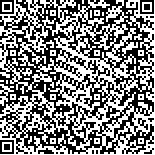| This article has been:Browse 1683Times Download 1105Times |

scan it! |
|
|
| DOI:10.13522/j.cnki.ggps.2017.0415 |
|
| Using Tracer to Study Salt Leaching from Root Zones in Hetao Irrigation District |
|
YANG Xueling, ZENG Jicai, MAO Wei, SUN Guanfang, ZHANG Yuxue, YANG Jinzhong
|
|
State Key Laboratory of Water Resources and Hydropower Engineering Science, Wuhan University, Wuhan 430072, China
|
| Abstract: |
| 【Objective】 The overarching objective of this study is to calculate water percolation and salt leaching from the root zone in Hetao Irrigation District. 【Method】 Bromide tracer experiment was conducted in Hetao Irrigation District in attempts to estimate the movement of water and salts in the root zone. 【Result】 The average water percolation rate estimated from the tracer experiment for the bottom of the root zone was 40.8 mm per annum, close to 41.6 mm estimated from water balance analysis. The percolation rate varied considerably between different irrigation methods, affected profoundly by the depth of groundwater table and the amount of irrigation. When groundwater with salt content of 1.0~2.5 g/L was used for irrigation, the root-zone salinity was just tolerable by plants after slats moving into and out of the root zone reached balance. 【Conclusion】 The current conjunctive use of groundwater and canal water in Hetao irrigation district is safe in terms of soil salinity, but the amount of irrigation needs to be increased if groundwater with high salt content is to be used for irrigation. |
| Key words: net leaching water; bromide tracer; Hetao irrigation district; water balance; salt balance |
|
|